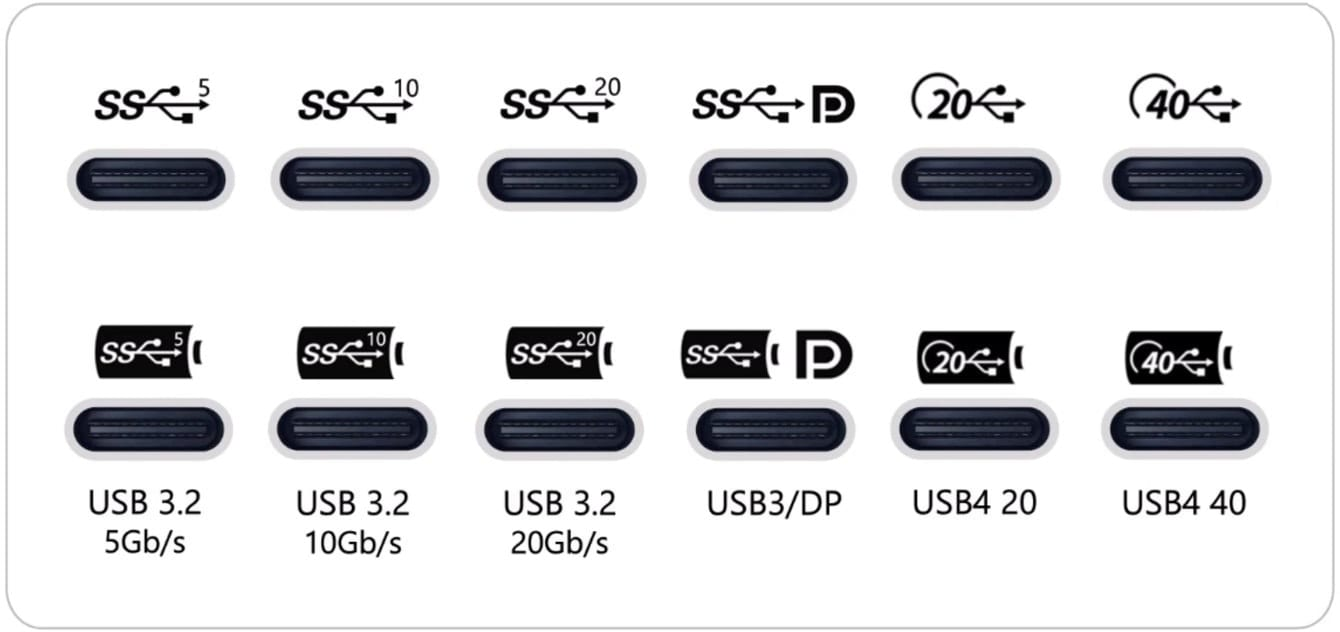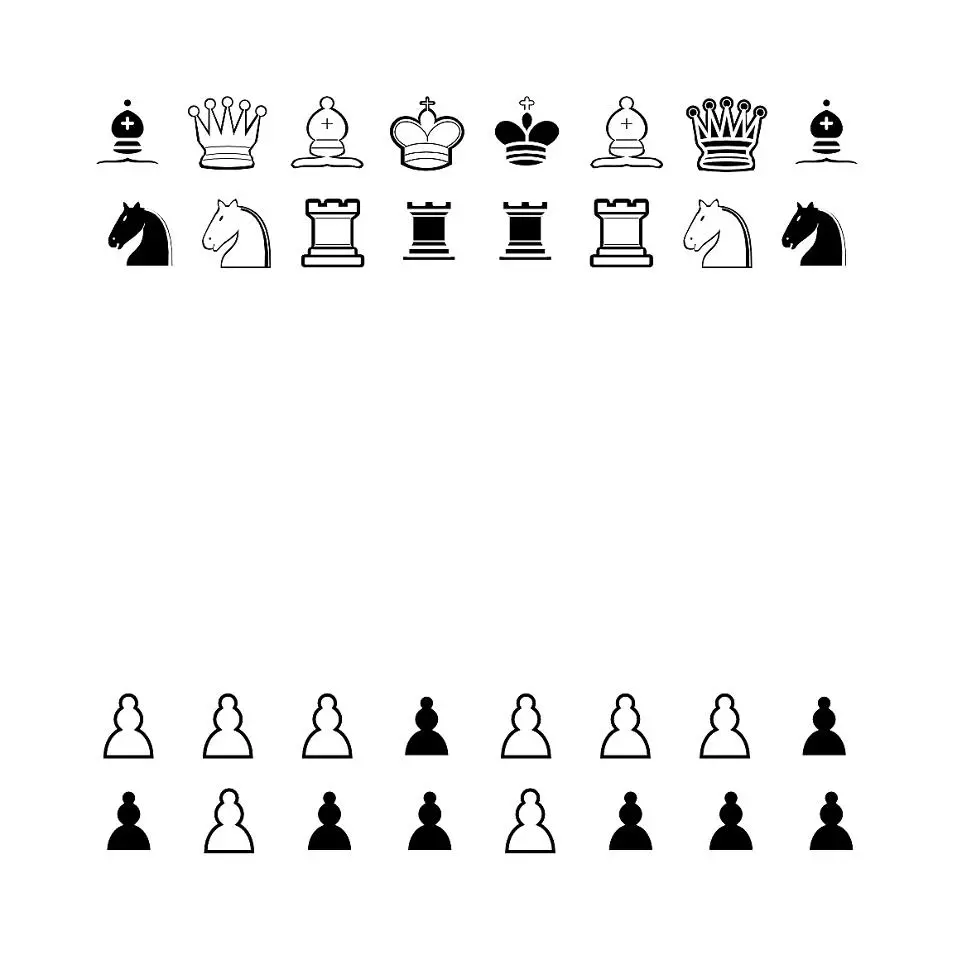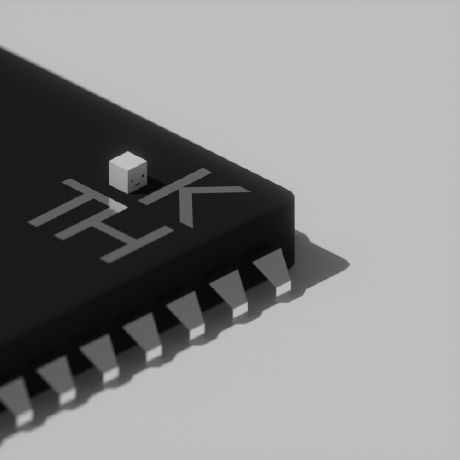Suck it micro USB, mini USB, and lightning! 🪫🔋
My only concern with this law, is that what happens when USBC is no longer the best option. Idk how to express what I’m saying but what if USB-G ends up being 1000x as fast. Does this law allow for chargers to evolve and if so, how? I admit I haven’t looked into this but I’ve been wondering about it.
I’m 99% wireless these days so I wouldn’t be surprised if chorded chargers are largely on their way out, but I’m still curious.
Manufacturers are allowed to add supplementary charging standards on top of USB-C PD, and the commission is required to review the landscape every 5 years to see if a new technology is better than USB-C that should be adopted in the future
Awesome! I knew by commenting someone educated would come along. Thank you very much.
It’s like when I make it rain or snow by washing my vehicle! I’m giving you part of the credit for it being future-focused…
⛈️
And they’re using recommendations from the USB consortium, which is comprised of all the large manufacturers in the world, so it should always be up to date during the review process.
Manufacturers are allowed to add supplementary charging standards on top of USB-C PD
Controversial opinion: I wish this wasn’t the case. So many different proprietary protocols, most of the time you’ll still need a specific adapter, and in some cases even a proprietary cable to utilize the full speed, and nowadays most devices come without the adapter.
And there’s even PPS in the PD spec allowing to request for a specific voltage rather than something in an existing list.But I do also have some personal grievances here:
-
Mi TurboCharge - This may be something based on PD, but still being something separate. I don’t know, but I do know it requires more pins than USB-A has. 5 pins. Somewhere I read this is connected to a CC pin in the USB-C connector. But no, they did not use USB-C, they used USB-A, with an extra pin. Only shortly before the phone died I finally figured out why it wasn’t charging as fast as expected - I wasn’t using their proprietary cable.
-
My current phone’s interference (?) with Qualcomm QC 2.0 - Somehow when using a cable with non-perfect connection on QC-compatible adapters, when I move the USB-A connector, it starts triggering 12V mode until it finally shows overvoltage error and slows down to 7W. QC 2.0 is how my USB tester identifies it. This is a MediaTek-based device, so I don’t think it would support QC. The original adapter uses PD and some 11V 6A thing with unknown protocol. Perhaps that is where the problem originates, I don’t know what data it sends down. But testing with OTG adapter on the original brick it seems the protocol needs the extra pins of USB-C to work properly.
I’ve had 3 phones that supported some fast charging, so far 2 of them made it into a confusing mess. Had they all used just PD it would have been a better experience.
I agree, but at least requiring USB PD, as it’s written, will at least give you 240 watt USB-C charging if they offer higher than 240 watt charging through a proprietary standard
-
USB-C doesn’t have speeds, it’s just a connector type. USB 1, 2, 3-3.2, 4 etc. is the protocol responsible for speed. You can have a USB-C connector with any implementation (except maybe USB 1). It can even do DisplayPort stuff.
So for USB-C to become irrelevant we need to come up with a better connector form factor. Which is unlikely to happen soon. But also, same thing happened with USB-B Micro connector (colloquially called micro USB), it was designated as a standard (but Apple managed to get an exemption) and manufacturers had no issues moving to a better connector, which is USB-C.On the downside, you can’t tell what the port supports by just looking at it.

Even with this graphic, I still don’t know what they support. Is circle-20 also 20gbps? What is the speed when there’s no number? Do the non-DP ones not support displays at all? And there appears to be no such thing as USB4-DP?
And good luck getting your grandmother to identify any of this over the phone. “Is it marked SS-subway diagram-20, or circle-20-subwaydiagram? Yes it’s etched gray on slightly different gray, go put on your strongest glasses first, grandma.”
Also, who’s at reading distance from a USB port half the time? Sometimes they’re on the front of a device, but they’re just as often hidden behind something or in a hard-to-reach place. Monitors and PCs come to mind.
It’s not like they’re going to change when you’re not looking.
USB4 supports DP and TB3.
My phone doesn’t have any kind of marking anywhere on it so I’m guessing it’s USB DP
I liked the magnetic apple connectors.
I hate Apple though.
The original MagSafe is great. I still have it on my laptop.
I wouldn’t have even known what to google to learn this. Thanks for sharing! I actually love the C form factor I didn’t realize that was kinda what made it C and not what it could do. I appreciate your response.
What I don’t understand is what was wrong with mini-USB.
Too thick? Just why do people want a portable computer to be thinner that their wallet, or their notebook, or their damned pen, or that Snickers bar in their pocket which nobody made thinner. Who the hell told them that “miniaturization being the future of tech” has anything to do with the box inside which that tech is mounted being just a bit thinner? I mean, were it thin enough to put computers into printed magazine pages, maybe (I think I’ve read that someone did this, with a computer kinda as powerful as ZX Spectrum). Why do they specifically need it? Not to appear “modern”, but really?
The question is, because for me personally mini-USB was very convenient. It held well, was easy enough to stick the right way (and not ruin it trying to stick it the wrong way).
Now, I guess USB-C is fine if it can do the same and go both ways. I actually like it, except RPi 4 is the only device I have needing it.
It’s just … how can one try so many connector types for one group of standards?..
Mini-USB sucked, big time. Not so bad as micro, but yea it was bad.
The main advantage of C over all previous versions is that it’s reversible, you can’t plug it in wrong. The shape is also… “flat”?, so it’s easier to fit into the socket, mini had that wavy like thing going on.
My data source is my small kid: he’s broken 3 (and counting…) usb-mini connectors by tugging the charging PS4 controllers, and he has to ask me to connect the cable to charge them, he’s unable to do it himself yet. With his tablet, 0 usb-c connectors broken and he can plug it in himself.
Sigh. OK. About breaking stuff - my mom managed to break an RPi charger of all things.
I think you guys are taking about micro USB. PS4 controllers have micro, PS3 controllers had mini USB.
They were both equally terrible the only improvement micro had over mini was it was slightly smaller.
USB micro (not sure if you’re getting micro confused with mini, but doesn’t really matter) only supported data transfer, not video transfer (like HDMI). Some USB-C ports are data only, but it theoretically supports more than USB micro was ever capable of.
For example you can buy a USB-C to HDMI cable for a few dollars, which could theoretically plug your phone directly into your TV (if your phone supports that). But a USB micro to HDMI cable was called an “MHL adapter” and was expensive and only worked on specific MHL capable phones like this one. It has a separate box that requires its own power cord in order to work, it’s not just a simple cable. USB-C should, in theory, eliminate the need for such a thing.
I do have that adapter, but you immediately realize phone screens suck when you mirror them on a big TV. Unfortunately it didn’t want to use it as a secondary screen - I don’t know if that has changed with modern iPhones/iPads: I should dig that up and try again
If I were to guess, it would be the additional pins. USB-C PD is capable of decent power transfer while also having enough data transfer capability simultaneously. USB-C docks are a good example, seeing that you can hook up a display, charger, other USB devices, ethernet, etc and have it all go through a single cable and (compact, convenient) connector. The reversibility is an added bonus
At the risk of sounding like Blizzard, don’t you have a phone? Even my previous phone, Galaxy S8 had USB-C. Or do you have an old iPhone?
Pretty much all electronics that came out in the past 4 years use USB-C. Just an example, here’s a non-exhaustive list of things that I charge with C:
- MacBook (2020)
- iPad (2018)
- Galaxy S10e (2019)
- Steam Deck (2022)
- Nintendo Switch (2017)
- Kindle (2020)
All of these are, on average, at least 4 years old. So I’m pretty sure the average consumer has already switched to primarily USB-C
The plug will be the same, bet money. There are already several sorts of USB-C. And think on this, the USB-A has had the same shape for going on 30-years.
This, USB-C is just the connector shape. USB-A is the standard square plug everyone knows, USB-B has several different ends, some more well known than others. The full sized “printer/hub” one, mini-B and micro-B which more people know. USB-A to A cables aren’t common, more akin to an Ethernet crossover cable, so you’re almost always going to see one of the B connectors.
USB-C is just the newest plug design, the actual cable and communication protocols have changed numerous times over the decades. USB-C might have been introduced alongside USB 3.0 and the massive increase in charging and data speeds with the new standard, but they are not exclusive.
The most obvious example is probably the iPhone 15 and 16, both had a USB-C plug, but the devices only supported USB 2.0 protocols.
USB-A to A cables aren’t common
I believe USB A-to-A cables actually violate the USB spec and should not in fact ever exist. They definitely should not exist as a straight-through cable (although obviously they still do in reality) without any active electronics in the middle. Male A plugs are solely for connecting to a host device, and the entire purpose of the spectrum of B plugs in their various guises is specifically to make the other end of the cable that goes into the endpoint device different. The point is that you are not supposed to be able to directly connect two hosts together like that.
A straight through dumb A-to-A cable would connect the +5v pin from the host device directly to the +5v pin on the device on the other end of the cable. If you did this between two host devices (i.e. two computers) it is certainly possible that Bad Things would happen if the designers of both devices did not account for this type of stupidity. The only way one of these can be valid according to the spec is to omit the power pins entirely.
That said, I have a particular flashlight that came with exactly one of these naughty cables: A straight through male USB A-to-A cable with no smarts in it whatsoever. The flashlight charges via a USB-A port which is exceptionally bizarre, and I suspect the reason it does so is because it can also act as a power bank and the manufacturer was too cheap to include a type C or micro B or whatever port for input and a separate type A port for output. But now I’m stuck having to use the moronic cable it came with (which is also only like 14" long) without much hope of ever finding an alternative or replacement…
Male to female A-to-A cables are pretty common (they’re just basic extensions) and totally legal under the spec provided they’re limited to a certain length or contain a powered repeater. It’s just the rare male-to-male (which my keyboard stupidly uses) and even rarer female-to-female that aren’t legal. There’s also the exception of USB-on-the-go cables with a micro-B end and a female A end for devices like smartphones that are capable of being host or connecting to a host, back before they switched to USB-C.
Invalid USB-A male to USB-A male cables are also commonly used on low cost KVM switches.
The one I got from Amazon has two of them - one for each computer, then the other end of each cable connects to the switch. The switch has its own micro-USB power supply but it is optional, so the cables must pass power
Yeah I remember back before CD-R was widespread, having only 3.5" floppies a Zip 100 drive, trying to look into how to move files from our old family computer to a new one.
I did find some sort of software at Best Buy or Circuit City, someplace like that, which used an A-A cable to directly connect two systems.
Yep. These were a stopgap in the days when normal users could not be expected to have a functional home network of any sort. Those were indeed active devices, and had a lump in the middle of the cable that basically amounted to an integrated USB hub.
Speaking of illegal weird cables: I actually have a Y shaped cable, USB Type-A male to USB Type-A female with an extra red USB Type-A male to inject more power if the host can’t power the device otherwise.
I’ve used it once to attach an external HDD to an Android Phone with an OTG male micro-B to female A adapter. It worked but it was kind of stupid :-D
Those used to be common for stuff like external drives (HDD, DVD…)that needed more power than old USB ports could provide, so they used two
I had not thought of this good point.
There’s only so much power you can put through such a small connector. I could certainly see a high end gaming laptop requiring more than 240W since GPUs keep getting more power hungry. They could increase the voltage a bit, but I doubt they will go much higher.
There’s already docking stations for laptops that use two USB C connectors for exactly this reason.
That’s so janky lol
Fair. I only use cables, but my assumption would be that they would adapt to new standards. Which is effectively what this is doing to standardize it, IMO.
You should verify this, but I think there is like a consortium of sorts made up of tech companies that pick a standard that they all must follow. So in the future, it’s possible for them to pick a new standard, and then after a transition period everything would be required to switch (though of course you could still continue using old devices, they just can no longer be sold new).
What happens if the better technology is invented by a company not part of that chosen tech club? They get to block it’s adoption?
If it’s really that much better, it’ll be used for other things and catch on, then they’ll be a part of the group.
How can it be used for other things, if this law makes that illegal?
The new law allows you to have more than one charging connector provided that either the USB-C one is the best one, or the USB-C one is as good as the spec allows. If the new connector’s genuinely better, then it’ll beat a maxed-out USB-C connector, so devices will provide it in addition to a maxed-out USB-C connector.
uh huh and when the company is sued into oblivion proving their tech is better then what? the problem with laws like this (and I generally support it) is that they give bad actors ways to club others to stifle competition.
What would they be sued with?
There is no requirement to prove that a different connector is better. They simply have to provide it and then it can be better by obvious design. Although it’s irrelevant anyway because no company is going to come up with a better adapter than the USB consortium. Practically every manufacturer is already in it.
Sued for following the law and making sure the required connector is present and functional? Unless I’m missing something, the law doesn’t require the port be exclusive. I mean, if it did, they’d have to stop including wireless charging, and I don’t see that happening.
It doesn’t. It only applies to “smartphones, tablets and cameras”, according to the article.
Starting today, all new mobile phones, tablets, digital cameras, headphones, speakers, keyboards and many other electronics sold in the EU will have to be equipped with a USB Type-C charging port,"
Source: the article
Well now I don’t know what to believe. Anyone have a link to the legislation?
If you bothered to read the article, you’d notice that the charger was chosen by the manufacturers a decade ago in a summons by the European commission. If Apple had complied to do what they agreed to do back then, this law wouldn’t exist. But they got whiny and litigious. So, instead of an at will standardization program, the EU decided to make it mandatory by law, to shut Apple up, and anyone else who wanted to forcibly refuse to comply. The cool thing about European law is that nothing is written in stone. Not even constitutions are considered sacred, unlike in the Americas, and can be changed at any point or amended as long as proper procedures are followed. There’s nothing, ever, preventing the EU from calling another commission of tech companies to choose a new charger, if a better one ever shows up.
I’m 99% wireless these days so I wouldn’t be surprised if chorded chargers are largely on their way out, but I’m still curious.
How fast is the wireless charging these days? I’d be surprised if it’s anywhere near the higher USB PD 3.1 modes.
USB-C isn’t the best option at all because USB c isn’t USB c. It only standardises the port and connector but there are many different connectors.
https://hackaday.com/2022/12/06/usb-c-introduction-for-hackers/
This is an interesting article, but I think that this standardisation is exactly for port being the same, not for pinning specific implementation of the 600+ pages long standard.
Thanks for the article, cool read!
It’s crazy, isn’t it? But it’s not a single article… I think there are ten more.
I don’t think that will occur, because what’s the point of developing USB-G if you’re not allowed to use it in a product?
deleted by creator
If you don’t know the answer it is of course perfectly acceptable to just not provide one.
Eu once again doing more to improve my life than my own government (tax holiday).
Canada?
The very same. I saved a few dollars here and there which I would more than trade for some decent regulations on the things I buy.
What’s funny is that I still got taxed for the expensive stuff I bought, just not a few take out orders and one toy I bought.
Now for those swappable batteries
Including cars.
Drive in, swap non-proprietary batteries with an autoloader, drive out. Done.
Yes and no. No need to hot swap massive EV batteries. Rapid is fast enough. But yes so the EV can be upgraded. The batteries go obsolete quicker than they degrade. So make it so we can swap the batteries and keep the rest running. In fact, just right-to-repair the whole car. In fact, the whole everything!
The batteries don’t live in isolation. There are other pieces that are dependent, whether for basic function or for calibration.
Example: Chevy issued a recall for mislabeling some Bolts as N2.1 vs N2.2. The fix is a sharpie to fix the label, and “reprogramming the Hybrid Powertrain Control Module 2”. I could find no information on either of these chemistries. Dropping in a LiFePO4 would require at least the same, and possibly more.
Now, if you’re suggesting simply swapping a matching replacement part (obsolete as it might be), then I’m on board with that
Oh totally, I have a E-Berlingo which basically an ICE converted to an EV, so there is all kind of compromises.
But batteries do improve and an old existing EV can be improved battery. Example: https://evsenhanced.com/aftermarket-battery/
But the economics is much harder if batteties aren’t unique to each EV. (They aren’t completely of course, the guts of my E-Berlingo are shared across a number of others.) EVs, like a lot else, should be designed with maintaining and upgrading in mind. Especially with parts like batteries which are in such evolutionary flux.
This sounds great until you’ve had to repair an old car.
Everything rusts, warps, etc. The same things that make it hard to change your brakes will make it hard to change the battery pack, and you’re expecting a robot to do it for you (and fast!).
There were companies built on this idea. I think they’ve all gone under at this point.
And range just dropped by half. Going somewhere without a loader? Have fun charging way more often.
Would still be nice for road trips in the civilized world though.
They have gas stations in the middle of nowhere as long as there’s enough people with cars. Not saying swappable battery facilities aren’t more difficult than gas station infrastructure, but range matters a whole lot less when you can swap a battery in under five minutes.
That is something that I wish would come true. This would also open EVs to the industry in some new ways. Currently it kinda sucks if you have machines that have to be able to run the whole day without big interruptions. When you’re able to just swap the batteries in like 5 Minutes this machines don’t have to rely on fossil fuels that much and are open to be replaced by electric ones.
What I’m thinking about are machines like tractors for farming. During the summer it happens that they are running for 8+ hours without interruptions. Building a battery this big will be quite challengening. However, if you’re able to swap out the batteries after like 2 hours and then continue with work you effectively solved one of the biggest problems with not that much of a hassle.
One of the benefits of EVs is we can get rid of a lot of infrastructure. Everywhere already has electrical so home and destination chargers are a minor add on and it’s only superchargers that are new infrastructure. Meanwhile the entire gasoline and oil refining, distribution, and tens of thousands of gas stations can just go away, along with their associated pollution.
Swappable batteries may sound cool but they’re less edficient plus now we have to build up a huge new set of infrastructure agai, we have to standardize batteries, and we can’t build them into structural parts. The only real advantage is speed but that’s not much advantage if you need to drive somewhere. I’ve never had to charge more than 25 minutes at a supercharger, so swapping a battery is only convenient if it’s at most ten minutes more away. Then you’re also assuming there will be more more battery and charger advances, such as those solid state batteries that a couple vendors claim are already in production, such as 800v charging that a few vehicles already can do, such as the latest Superchsrgers that can charge faster than any car can accept so far, or the semi chargers that have a few built out.
Long before you could build out a huge new infrastructure for seappable batteries and standardize cars around it, we’ll already have charging improvements that will make seappables irrelevant. You could argue they already are irrelevant in some areas
While 25 mins doesn’t sound terrible you have to consider throughput. Long lines, waiting for chargers could become an issue if adoption takes off, and if I ever drove by a set of chargers that was full up and more people waiting that’d probably put me off from buying one.
That’s actually the next goal
Please do this for things like rechargeable electric shavers and toothbrushes as well.
Those, especially the toothbrush, need to be more water resistant. Electric teethbrush should be entirely waterproof, and I don’t think USB-C can do that.
I have seen toothbrushes with USB-C, they just connect to the docking station. Which makes sense IMO, you wouldn’t want to plug and unplug your toothbrush every time you want to use it.
Can we bring back the charging as well, and not just the USB cable… Oh, and while you’re at it, screws instead of glue, to replace batteries would be awesome.
Thx!
There’s a rule coming into effect in 2027 that enforces user replaceable batteries for devices in the EU. https://www.pcmag.com/news/eu-smartphones-must-have-user-replaceable-batteries-by-2027
while 2027 is better than nothing, I still wonder why it took them so long. Glue in smartphones has been around for probably a decade now.
Also, I think, anything that has a battery, should be user replacable… even teeny-tiny earbuds.
Totally agree! It’s seemingly gotten worse recently too. My phone is 5 years old and I was still able to replace the battery at home but it took special tools and a hair dryer. The newest Pixels and Galaxy phones look impossible to do with my current skillset.
Things like Fairphone and the HMD Skyline should be the norm going forward.
To allow the manufacturers to adapt and phase out?
For USB sure… it’s kinda “newish”. But, I mean, they could’ve intervened much sooner, when glue became the standard for assembling phones.
There’s always an implementation period with these things, also with the USB thing, to allow companies to build and sell phones that are already in the pipeline. Expect, just as with the USB thing, replaceable batteries to become a common sight quite soon and ubiquitous by 2027. You can already get quite decent smartphones with replaceable batteries but it’s the usual suspects Fairphone, Gigaset, and (at least one model of) Samsung, those would also exist without the regulation. The “oh shit they actually passed it we’ll need to re-engineer things” models from everyone else still aren’t on the market.
And before anyone brings it up: Yes, you can make them waterproof.
Waterproof
Strongly agree!
Looking back, I suspect this was only an argument to make them hard to repair, as always, just worded in a sense like it’d benefit the customer.
FFS, just add some rubber… We’ve used rubber in condoms for centuries (kinda) succesfully, what made them think glue’d be better… I ain’t gonna put glue on my ding-dong, if that’s what they’re after all these years.
I suspect this was only an argument to make them hard to repair, as always
They don’t mind the benefit, for sure. But as somebody who worked in manufacturing support jobs up until a couple years ago, I’m 90% confident it’s just faster and cheaper to glue them. Probably easier to automate too. Again it just comes down to money.
Just thinking of the scale of R&D for something like a flagship phone, there are a LOT of person-hours dedicated to manufacturability.
Sadly, it still allows to glue batteries with very little requirements.
Just get a Fairphone, with every module screwed into place. Except the battery, you can just take that out by hand.
That’s true, but if the EU could force every phone maker to make the battery replaceable by the customer this would be a huuuuuuge step in the right direction and reduce electronic waste.
It’s already enforced. All devices sold in the EU from 2027 will need a user-replaceable battery.
We’re going to see some manufacturers come out with those devices sooner, though. I hope.
no keep the glue please. I love that my phone’s back just came off on its own just because it was hot outside and the glue melted away. it was fun and exciting!
You must have been in death valley or something because the glue doesn’t melt into like 80° C
the phone heats with use as well. but yeah Samsung is known for its high build quality. it’s not like they made devices that explode or anything.
While this is good news, the likes of Apple will still find ways to be “compliant” while still being total assholes about it. e.g. the device might charge with USB C but they’ll gimp the data transfer rates on non-pro phones. And they’ll do the same when mandates about repairability come in - all of a sudden the battery will have a bunch of expensive DRM’d up the ass circuitry attached to it that will cripple the phone if its not recognized or registered by one of their techs and means Apple can kill old phones by being “out of stock” of the battery.
e.g. the device might charge with USB C but they’ll gimp the data transfer rates on non-pro phones.
Just so you know, there are others who have slow speed on USB Type C already. My mother’s Galaxy A52 has a USB Type C port that has only USB 2.0 support for data transfer, but with USB PD 3.0 PPS charging up to 25 W.
To me it’s legitimate to use USB Type C for better power delivery even if the chipset runs only at 2.0 speeds for data transfer. But hobbling a fast chipset just for product segmentation would be shitty. It is something I could see Apple doing though.
This is absolutely true,however the EU has proven to be not someone you mess with. Apple has already tried shenanigans to stop side loading and got beaten by the EU to comply with the rules.
Honestly, people who still buy apple phones are dumb fucks. No way to say this nicely.
There’s a weird discrepancy where Mac Laptops are decent machines despite being on the expensive side, but iphones are just overpriced hot garbage locking you into an ecosystem.
I’m not an apple fan, but this is just a dumb take. they have their place, even if it’s not under your ownership.
iphones have a place about as useful as diamonds - as a status symbol alone. They are used to create out-groups and discriminate against poor people.
The original iphone may have been useful - the update hype with ever more expensive BS is just milking stupid people for cash.
There’s really no need to take sides when it comes to the phones from giant corporation A vs giant corporation B. To most users, an iPhone is a hand-held screen that launches your apps, just like everything else from a bloated Samsung to a Graphene’d Pixel.
And it’s not that I want to defend Apple on Lemmy, so I’m not gonna, but it seems like all the other mainstream options are as bad or worse in many areas. (Privacy, duration of software support, etc)
the “status” issue is a completely different argument than what I replied to.
You need to work on your reading comprehension, or your short-term-memory. Or both?
will ti 84 calculators have to follow this?
“Starting today, all new mobile phones, tablets, digital cameras, headphones, speakers, keyboards and many other electronics sold in the EU will have to be equipped with a USB Type-C charging port,” the EU Parliament wrote on social media X.
seems like probably yes!
I haven’t read the legislation, but I get the thrust of it. They want to standardize cellular devices and also cut down on electronic waste. If it’s specifically for cellular devices, then no it won’t affect TI products. If it’s more generally to cut back on electronic waste, then yes it will affect them.
The benefit is that by being standardized, there will be less proprietary cords and adapters. And the capability of USB-C should be adequate for sometime with the power and data transfer.
One issue, is that not all USBC cords are of the same quality. I found this recently when trying to find a cord that can be used for an external SSD, and video for a monitor. Some cords worked, the rest did not. All the cords could be used for charging, but after that, all bets are off.
The problem is that USB-C is a plug not a standard even in charging some cables won’t do as much power as others (though at least they communicate that to the power source).
I do however fully support the total USB-C rollout. In my everyday carry there’s now only one plug (2 USB-C one USB-A) and some cables that I can charge everything with, my laptop, my phone my Powerbank and even those few devices that are still USB-B micro (I just carry one USB-A to micro cable).
USB C cables have been all over the shop since the beginning, and chargers. I remember even 5 years back the problems they had. Part of that is the cables and chargers are “active” in the sense they negotiate charge rates and other functionality between either end and if one end is dumb or doesn’t respond properly you get the 5V 2A default. On the other hand if you have a USB C 4.0 lightning cable and two compliant devices then potentially you could be powering 2 monitors, keyboard, mouse, wifi, a graphics card even AND charging through one cable. It’s actually incredible when it works properly.
cables and chargers are “active” in the sense they negotiate charge rates and other functionality
Just so you know “active cable” already has a separate meaning: They repeat the USB signals somewhere in the middle for a longer transmission distance.
I think the better idea is to pick up the terminology from the USB-IF, they speak of electronical marking, or e-markers in the cables. It’s usually a small chip integrated in one of the plug assemblies.
I bought a really nice, high quality, very fast charging and data transfer cable, and there’s one device I own that it will not charge at all. My assumption is that it probably doesn’t have a charging control chip or something else required to work with that cable. It doesn’t work with any other USB-C to C cables I own either. It has to be charged with the USB-A to C cables included in the box
USA checking in.
Just bought a new USB-C charging beard trimmer on clearance.
Feels good, man.
Thamks if EU helped.
Now if only we can standardize cables or at least labeling. We went from everything working wherever it would plugin to everything plugging in but who knows if it will work
Kudos to the EU, end the waste.
Hell to the yeah!
Don’t celebrate until the next version of USB comes out. Will this force everyone to adopt the newest version always or cling to the oldest?
Why are you bringing this up like it hasn’t been discussed thousands of times? Like it hasn’t been stated (and cleared) in this very post?
We transitioned from USB Micro B to USB-C.
that was before this law, so quite irrelevant to the question.
It’s very unlikely that the C-type port is changing anytime soon. Most devices will stay on whatever underlying USB version that the manufacturer deems adequate for that device.
Good 👍 I just hope nothing replaces USB-C anytime soon
USB-CDE
USB-CDEFGHIJKLMNOPQRSTUVWXYZ
Sometimes Y not usually though
USB-C Gen. 2.4 rev. A²*
Thx EU, glad to live here
Thx EU, I live in the the land of the fee but will benefit from you forcing apple to be compatible.
Don’t buy Apple to be compatible.
Don’t buy Apple
to be compatible.Couldn’t agree more mate























